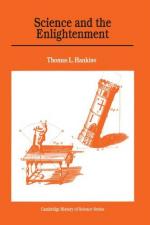
|
| Name: _________________________ | Period: ___________________ |
This quiz consists of 5 multiple choice and 5 short answer questions through Chapter 5, Natural History and Physiology.
Multiple Choice Questions
1. The ________ greatly increased the demand for certain chemical products, such as alkalis and mineral acids, and the search for improved methods of manufacture resulted in new chemical techniques in metallurgy, ceramics, and textiles, especially in textile dyeing and bleaching.
(a) French Revolution.
(b) Great Depression.
(c) Industrial Revolution.
(d) World War II.
2. In Chapter 2, what was the name of the shape of a chain suspended between two fixed points?
(a) Involute.
(b) Isoperimeters.
(c) Catenary.
(d) Tractrix.
3. In 1688, Fontenelle wrote a treatise on the nature of the eclogue or ________.
(a) Limerick.
(b) Pastoral poem.
(c) Haiku.
(d) Sonnet.
4. In Chapter 4, Abbe Condillac claimed that ________ was the best language because it had the best symbols.
(a) Chinese.
(b) Japanese.
(c) Algebra.
(d) Sign language.
5. In 1757, thirty years after Hales described his experiments with ________, Joseph Black discovered the phenomenon of ________.
(a) Fixed air / latent heat.
(b) Volatile liquid / fixed heat.
(c) Vaporization / Dissertation.
(d) Latent heat / Fixed heat.
Short Answer Questions
1. According to the narrator in Chapter 4, who was the most successful searcher for "airs"?
2. Descartes's "quantity of motion" is equivalent to our modern principle of the conservation of ________.
3. Who was the first person to identify a new air different from common atmospheric air,, in Chapter 4?
4. In 1729, ________, a dedicated amateur experimenter and occasional contributor to the "Philosophical Transactions" of the Royal Society, discovered that electricity could be communicated over rather long distances by contact.
5. The discipline of physics had originally been created by ________, and it had nothing to do with experiment or quantitative measure nor was it limited to the inorganic world.
|
This section contains 261 words (approx. 1 page at 300 words per page) |

|




